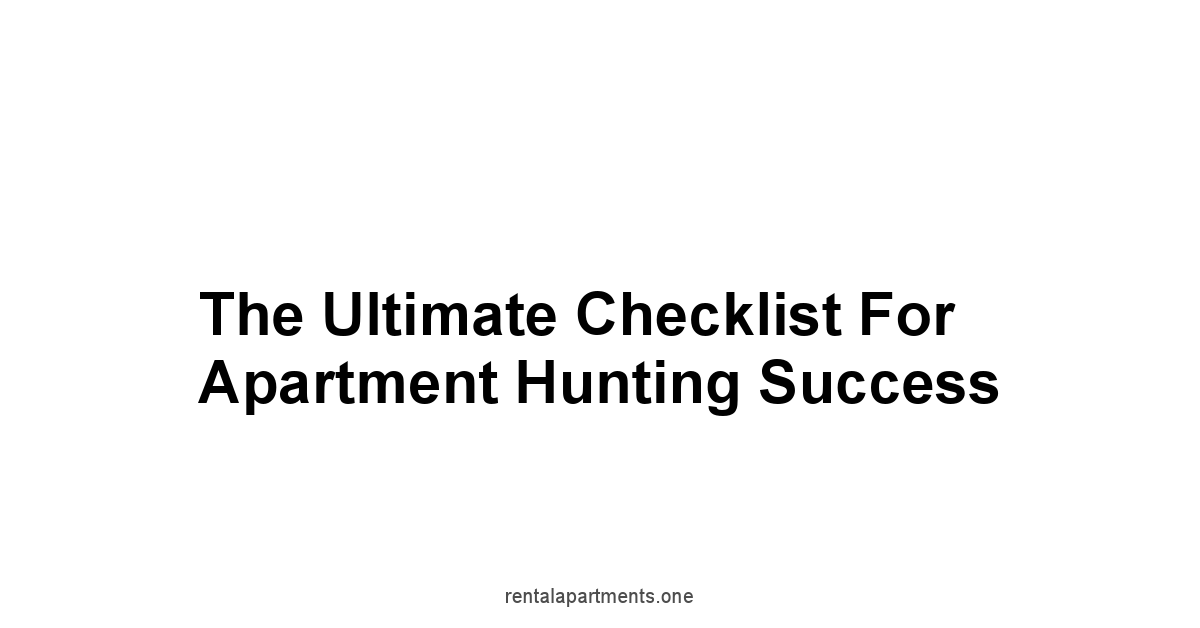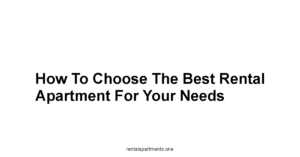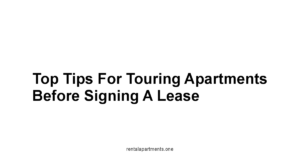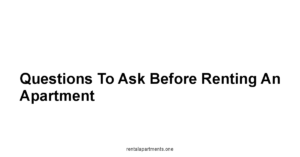The apartment hunt, a quest often fraught with uncertainty, demands a strategic approach, approximately 40% of renters move every year, a testament to the challenge of finding the perfect fit, so, to ensure success, meticulously define your needs, separating “must-haves,” such as the number of bedrooms and bathrooms, specific amenities like a washer/dryer, and pet-friendly policies, from “nice-to-haves,” like a balcony or a walk-in closet.
This is not about wishful thinking, it’s about being realistic and understanding your requirements, a list that will be your compass.
The location is not just a pin on a map but the very foundation of your daily life, it dictates your commute, access to amenities, and your overall sense of safety.
This element will impact the whole structure of your daily existence so, consider commute times, neighborhood character, and proximity to grocery stores, all critical to your well-being.
The unbreakable rule of this game is the budget, you have to calculate the total housing costs, including not just the rent, but also the utilities, internet, and potential moving costs, and aim for the 30% rule: keep your rent at or below 30% of your gross monthly income.
Consider these figures: roughly 65% of renters exceed their budget during their search, that should not be you, so, be realistic about your financial situation, and do not fall for the temptation of properties that go beyond your financial limitations, and instead focus on properties that suit your budget.
Your living space is not just a shelter, it’s an extension of your lifestyle, so reflect on your daily grind, your needs for working from home, social habits, and personal preferences, it all has to match up.
The hunt begins now, you need to look at online marketplaces like Apartments.com, Zillow, and Craigslist, each having its own pros and cons.
For instance, Apartments.com is known for its extensive listings, while Craigslist offers potentially cheaper options.
Consider this, in a survey, over 70% of renters start their search online, which means a lot of competition, but this is not the only source, go find local real estate agents who bring their local expertise and can offer hidden properties.
You can also tap into the power of word-of-mouth, as personal recommendations can lead to hidden opportunities, and consider driving around the neighborhoods to uncover hidden gems that you won’t find online.
Then comes the inspection, the art of scrutiny, examine the unit itself: test every light, run every faucet, check the structure, and make sure all the appliances are functioning as expected, and check all the common areas, hallways, stairwells, and laundry rooms.
Safety measures must be on your list: smoke detectors, locks, and emergency exits are essential, and also look at parking: its accessibility, cost, and security.
You’re not just looking for four walls, you are looking for safety and security.
The necessary evil comes: Paperwork.
Read the lease agreement, every word, twice, maybe three times, to understand the term, rent amount, late fees, pet policies, and maintenance responsibilities.
Fill out application forms with full disclosure, no lies, as you will be subject to a background and credit check.
Be prepared for the security deposits, protect your cash by understanding its terms.
Protect yourself with renter’s insurance, your safety net.
And then, the final push: the move.
The art of packing is not throwing things in boxes, instead, start early, declutter, label every box, use quality supplies, and pack an essentials box.
Set up utilities in advance, electricity, water, gas, and internet.
Plan moving day, enlist helpers, protect your belongings, and strategically unload in the correct rooms.
Do not forget to change your address so you don’t lose any important mail.
And finally, settle in: unpack, organize, add your personal touch, explore your neighborhood, and relax. You made it.
This process is not a sprint, it’s a marathon, requiring detailed planning and focused activity, every step matters in the process.
Define Your Needs, The Bare Bones
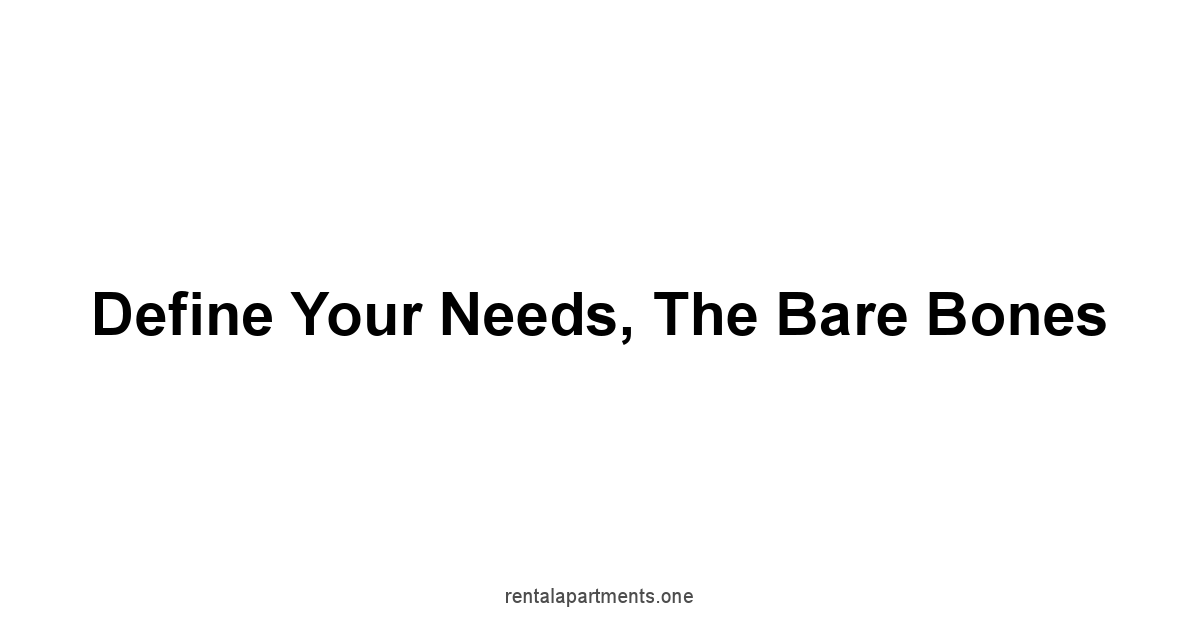
Before you start pounding the pavement or scrolling through endless listings, you need to know what you’re looking for.
It’s like going into a fight, you don’t just swing blindly. You need a strategy, a target.
Knowing what you need, what you absolutely must have, versus what would be nice, but not essential, is the first step.
This isn’t about wishful thinking, it’s about building a foundation for a successful hunt.
A clear list cuts the fat, saves time, and keeps you focused, like a good rifle scope.
You’re not just looking for four walls and a roof, you’re looking for a place that fits your life, your habits, and your plans. Don’t just drift through listings. Be deliberate.
This isn’t a game of chance, it’s about finding the right space for you. It’s about getting your priorities straight.
So let’s get into the nitty-gritty, the specifics that will make or break this quest for the perfect spot.
Must-Have vs Nice-to-Have
You need to separate the wheat from the chaff.
What are your absolute must-haves? These are non-negotiable items, the core needs that will make or break a place.
On the flip side, your nice-to-haves are those extras that would be great, but not critical.
It’s about focusing on what truly matters and what you can live without.
Think of it like packing for a long trip, you have the essentials, and then you have the luxuries.
- Must-Haves:
- Number of bedrooms and bathrooms. Don’t try to squeeze into a one-bedroom if you need a two, or vise versa.
- Specific amenities, such as a washer/dryer, dishwasher or air conditioning. Check if you can do without it, or will it be a deal breaker
- Pet-friendly policies, if you have a pet. Check if there is any extra cost for that
- Accessible location or proximity to work or school. No use in getting a place if it is too far.
- Safety and Security standards. No sense in settling in a dangerous place.
- Nice-to-Haves:
- Balcony or patio space. Not needed, but always a nice to have.
- Walk-in closets. A luxury but not essential
- Modern appliances. Useful but not necessary.
- Gym or pool access. Good to have but not a deal breaker.
- Updated kitchen or bathroom. Will not change anything fundamentally.
This list will help you filter your options efficiently.
It helps you avoid getting sidetracked by unnecessary features, and make sure you end up with an apartment that suits your requirements.
Location, Location, Location, Your Real Target
Location isn’t just a buzzword, it’s the foundation of your daily life.
Where you choose to live dictates everything from commute times to the local amenities you’ll have access to.
It impacts your sense of safety, community, and overall quality of life.
Think hard about your daily routes, needs, and wants.
This is the stage where you visualize how the new location would change your life.
Consider the following factors when thinking about your location:
- Commute: How long will it take you to get to work, school, or any other frequent destination? Consider traffic patterns, public transportation options, and walkability. The time it takes to get places adds up, so think of this carefully.
- Neighborhood: What’s the character of the neighborhood? Is it lively, quiet, family-oriented, or bustling with activity? Take some time to walk around the streets and see if it suits your style.
- Amenities: Are there grocery stores, restaurants, parks, gyms, or other places you frequent nearby? Are they walkable or do you need to drive?
- Safety: Research crime rates and the general safety of the area. Talk to current residents, take a look around at night and see if the place is safe.
- Accessibility: Are there nearby public transportation stops? Is it easy to get around by car, bike, or on foot?
| Location Factor | Questions to Ask |
|---|---|
| Commute | How long does it take to get to work or school? |
| Neighborhood | What is the vibe of the area? |
| Amenities | Are there grocery stores and parks nearby? |
| Safety | What are the crime rates in the area? |
| Accessibility | How easy is it to get around by public transport? |
Think of the location like the frame of a house, it provides the structure and sets the tone for everything else. Choosing the right one is essential.
Budget: The Unbreakable Rule
Your budget is not a suggestion, it’s the hard line you don’t cross.
This is not about wishful thinking, it’s about the reality of your financial situation.
You need to know what you can realistically afford, and stick to it.
This is where many go wrong by stretching their budget too thin.
It’s better to find a place that fits your finances than to be constantly struggling.
A hard budget keeps you grounded and saves you a ton of headaches.
- Calculate Total Housing Costs: Don’t just think about rent; include utilities, internet, cable, and any other related monthly expenses.
- Use the 30% Rule: As a general guideline, aim to keep your rent at or below 30% of your gross monthly income.
- Set a Limit: Define your maximum rent, and stick to it. There is no good in even looking at places outside your budget.
- Consider Hidden Costs: What about moving expenses, application fees, or potential pet fees? These are important elements to factor in.
- Be Realistic: Be honest with yourself about your financial situation. Don’t try to squeeze into something that’s too expensive and don’t settle for something too cheap.
| Expense | Estimated Cost | Notes |
|---|---|---|
| Monthly Rent | $X | Your main expense |
| Utilities Water, Gas, etc. | $Y | Varies by consumption, location, and season |
| Internet/Cable | $Z | Choose the plan that works for you |
| Renters Insurance | $A | Usually low cost and provides a good level of protection |
| Moving Costs | $B | Includes truck rental, packing supplies, and help if needed |
| Application Fees | $C | Pay when you make an application to a property |
| Pet Fees | $D | If you have a pet, there may be some extra cost |
| Total Monthly Cost | $X+Y+Z+A | Add all the values for your estimated monthly expenses |
Your budget should be your constant companion.
Don’t stray from it, no matter how tempting some properties might look.
Lifestyle Fit, Think About Your Daily Grind
Your apartment isn’t just a place to crash, it’s an extension of your lifestyle.
Consider how you spend your time and what you value in your living space.
Do you work from home? Do you entertain friends? Are you a bookworm who values silence? The right apartment will complement your routine, and the wrong one will feel like a cage.
Your living environment should make sense with your style of living.
Here are some lifestyle factors to think about:
- Work-From-Home Needs: Do you require a dedicated office space or a quiet corner? Make sure the place suits your work needs.
- Social Habits: Do you need an open-plan space for entertaining, or are you looking for a more intimate setting?
- Hobbies and Interests: Do you need a space for a craft table, a home gym, or a place to practice your instrument?
- Personal Preferences: Do you need natural light, a specific view, or access to outdoor spaces?
- Future Plans: Will you be adding a roommate? Do you plan on having kids? These are crucial to consider.
Your apartment should be more than just a place to sleep.
It should be a sanctuary, a place where you can thrive and be happy.
Think of how you live your life and how that fits with your living space, and make sure it’s in line with the new apartment.
The Hunt, Where to Look and What to Find
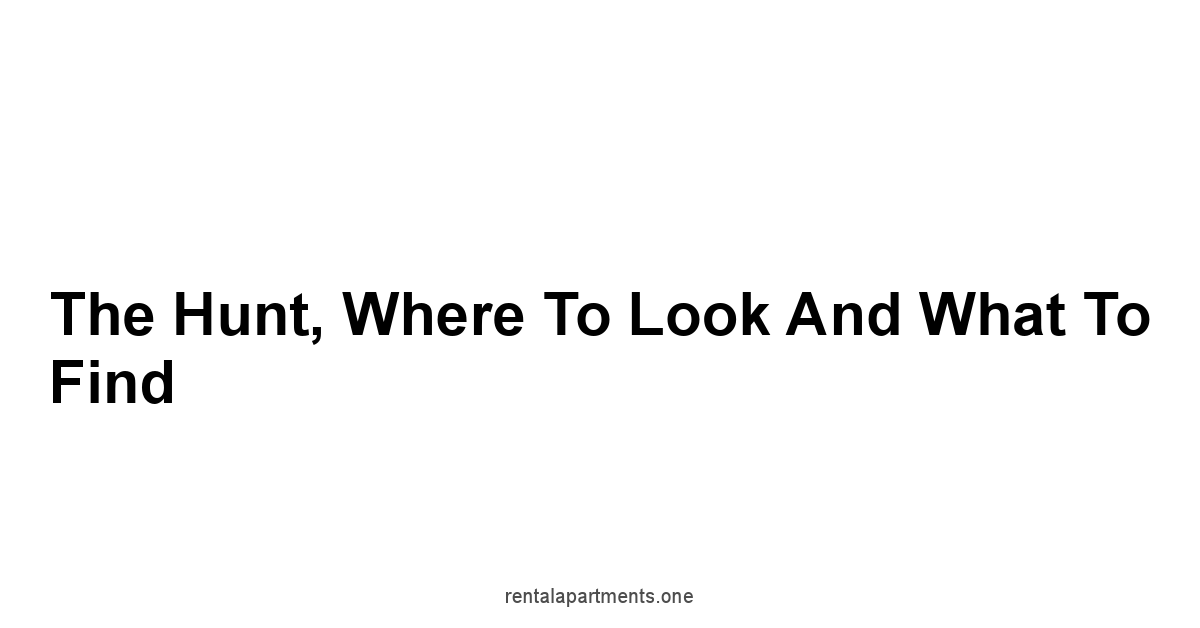
Now that you have your needs defined, it’s time to start the hunt.
This isn’t just about browsing listings, it’s about actively seeking the right space. You need to be strategic and know where to look. This is not a passive activity.
You have to hunt and seek, and be active in the process.
Don’t just rely on one source, cast your net wide and be open to new possibilities.
The hunt requires a plan, and it requires that you put in some effort.
So, where do you start? The options are diverse, from online portals to local agents, to simply putting in the legwork by checking out the streets.
Be ready to do the work, because sitting around is not going to help find you that place.
Online Marketplaces: Apartments.com, Zillow, Craigslist, the Big Dogs
Online marketplaces are your first line of attack.
Sites like Apartments.com, Zillow, and Craigslist are loaded with listings, giving you access to a wide variety of properties.
These are the big players in the game, with the largest volume of listings available, allowing you to filter based on your requirements.
They’re efficient, providing photos, detailed descriptions, and virtual tours.
- Apartments.com: A robust platform with a large database of apartments. It allows for detailed filtering and offers user reviews. The site is easy to use and provides good tools for your search.
- Zillow: Known for real estate, Zillow also has a large selection of rental properties. They offer a comprehensive overview of listings, with a focus on detailed information and visual aids.
- Craigslist: While less polished, Craigslist can offer unique, and sometimes cheaper, options. It requires more diligence, as you’ll have to sift through a lot of listings. However it can also yield a good find.
| Platform | Pros | Cons |
|---|---|---|
| Apartments.com | User-friendly, extensive listings, detailed filters, user reviews | May have more competition due to popularity. |
| Zillow | Large database, good visual aids, detailed property information | Can be overwhelming due to sheer volume and may focus on sales more than rentals. |
| Craigslist | Potential for unique deals and direct contact with landlords, can be cheaper. | Requires more diligence, less polished, potential for scams, might need more work from the user. |
These platforms are powerful tools, but they require a bit of finesse.
Don’t just browse, filter your options based on your criteria, set up notifications for new listings, and check back often.
The market moves quickly, so you must stay on top of the new openings.
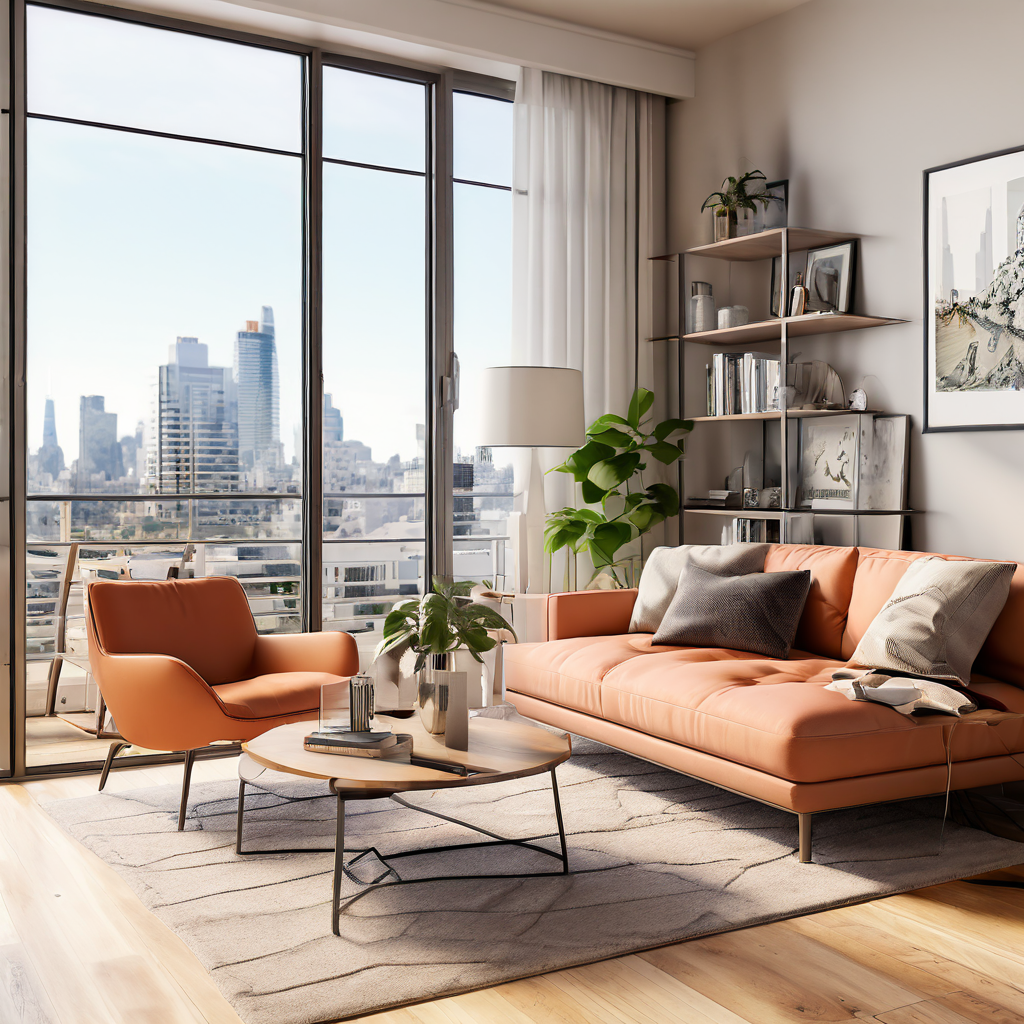
Local Real Estate Agents: Your Foot Soldiers
Local real estate agents are your foot soldiers in the rental market.
They are experts in the local scene, and they are familiar with available properties that might not even be online.
They’ve got their ear to the ground, and often know about opportunities before they hit the internet.
Consider them your allies in this hunt, your secret weapons in the battle for the perfect apartment.
- Local Expertise: Agents have knowledge of neighborhoods, trends, and the rental market conditions in the area you’re targeting.
- Access to Unlisted Properties: They often have access to properties that haven’t been listed online yet. This gives you an edge and might allow you to find better locations.
- Negotiating Power: Good agents are skilled negotiators and can help you secure a good deal on your desired place.
- Time Savings: They handle the initial search, scheduling viewings, and navigating paperwork, freeing you from the time-consuming tasks.
Hiring a local real estate agent is like having a guide on a complex trek.
They can save you time, effort, and potential headaches.
They also come with an insider’s knowledge and local expertise.
They can be invaluable in finding a place that suits you.
Word of Mouth, The Grapevine is Strong
Don’t underestimate the power of word of mouth.
The grapevine can be a surprisingly effective way to find a new place.
Your friends, family, colleagues, and even your old neighbor might know about a property that’s available.
People who have lived in an area are the best source of knowledge, so tap into that network.
- Personal Recommendations: People you know are likely to offer honest opinions and insights into properties and neighborhoods.
- Hidden Opportunities: Word of mouth can lead you to listings that aren’t advertised through usual channels.
- Local Insights: Friends might know the best kept secrets of a neighborhood, including pros and cons.
- First Notice: You might get notified before a property is even advertised on the market.
Start by letting everyone know you’re looking.
The more people know, the more eyes and ears you have in the market.
Don’t discount this old method of finding a property, it’s still a good tactic in the search.
Drive Around, The Streets Have Eyes
Sometimes the best way to find a place is to get out and explore.
Driving or walking around the neighborhoods you are considering can reveal gems that you won’t find online.
You’ll see “For Rent” signs, get a feel for the atmosphere, and discover potential locations.
The streets tell a story, and it might just be the story of your new home.
- Visual Confirmation: Seeing a place in person provides a sense of the neighborhood, its surroundings, and overall vibe.
- “For Rent” Signs: Many landlords use the old method of simply placing a “For Rent” sign in front of their property, especially smaller landlords that do not post listings online.
- Local Atmosphere: You’ll get a feel for the neighborhood, its people, and the places nearby, allowing you to decide if it fits your lifestyle.
- Undiscovered Areas: Driving around can lead you to neighborhoods or properties you haven’t found through other sources.
Sometimes the best opportunities are right in front of you, all it takes is being there.
Don’t rely just on online options, spend some time out on the streets, your next home might be just around the corner.
Inspection, The Art of Scrutiny
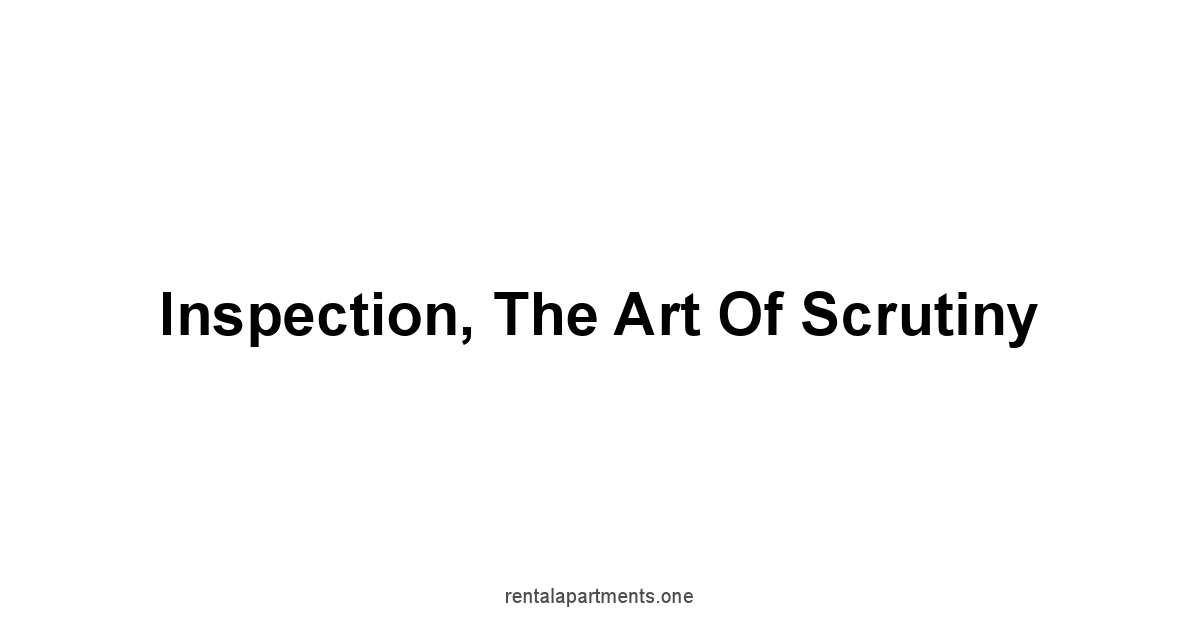
Once you’ve found a place that sparks your interest, it’s time for the inspection.
This is where you go from being a casual browser to a meticulous observer.
This is not a quick walk-through, it’s a careful, detailed examination of everything.
You are not just looking at the walls, you are checking everything and seeing if they work.
Don’t be afraid to be thorough and ask the important questions.
This is the crucial phase where you separate the good from the bad, the potential from the problematic.
You’re not just seeing a space, you’re assessing it, and making a determination if this will work for you.
The Unit: Lights, Water, Structure
Start with the unit itself. Check the basics: lights, water, and structure.
This is not about aesthetics, it’s about functionality and condition. Look at everything critically.
Don’t be afraid to open cabinets, test appliances, and check every corner.
This is your chance to identify any problems before you sign on the dotted line.
- Lights: Check every light fixture to make sure it works. This includes overhead lights, lamps, and wall sconces. Check all of them and make sure that they are not broken.
- Water: Run all the faucets, showers, and toilets. Check the water pressure and look for leaks. See if the water gets hot quickly and consistently, and that the pressure is even.
- Structure: Look for cracks in the walls, ceilings, or floors. Check if the doors and windows open and close properly. Check everything related to the structure and make sure that everything is in working order and nothing is loose, damaged or broken.
- Appliances: Test all appliances, like the stove, oven, refrigerator, dishwasher, and microwave. Make sure everything works properly, and the oven heats up.
- Ventilation: Check that exhaust fans work in the kitchen and bathrooms. You want proper ventilation in these areas.
| Item | What to Check |
|---|---|
| Lights | If all fixtures and switches work |
| Water | Water pressure and for any leaks in faucets, showers, and toilets |
| Structure | Look for cracks, and if doors/windows open and close correctly |
| Appliances | Test all to see if they are functioning as they should |
| Ventilation | Check kitchen and bathroom exhaust fans |
This is about making sure that everything is as it should be. Don’t gloss over these critical parts. Pay attention to the smallest of details.
Common Areas: The Real Story
Don’t just focus on the unit itself, take a look at the common areas.
These spaces reflect how a complex is managed, and they can tell you a lot about the maintenance and quality of the place.
Common areas will be part of your daily life, and you’ll be using them, so make sure that they are up to par.
- Hallways: Check if they’re clean, well-lit, and free from clutter. See if the walls are clean and the carpets well maintained.
- Stairwells: Make sure they’re safe, well-maintained, and properly lit. See that they are clean, without trash, and are not broken.
- Lobby/Reception Area: If there is one, is it inviting? Is it well maintained? Does it make you feel at ease?
- Laundry Room: If there’s a communal laundry room, check its cleanliness, if the machines work, and if it is in good repair.
- Trash Area: Check the cleanliness of the trash area and how well it is maintained.
- Outdoor Spaces: If there are any outdoor areas, like gardens or patios, see if they are well kept and maintained.
| Area | What to Check |
|---|---|
| Hallways | Cleanliness, lighting, clutter |
| Stairwells | Safety, maintenance, and lighting |
| Lobby/Reception | If present, cleanliness and maintenance |
| Laundry Room | Cleanliness and if the machines are in working order |
| Trash Area | Cleanliness and maintenance |
| Outdoor Spaces | If present, how well they are kept |
These common areas are an indication of how the entire building is being taken care of.
Pay attention to these areas as they provide a lot of good information.
Safety Measures: Smoke Detectors, Locks
Safety is not a detail, it’s a necessity.
Before making any decisions, check the safety measures of the apartment.
This includes working smoke detectors, functioning locks, and any other features that add to the security of the place. You want to be safe and secure in your apartment.
- Smoke Detectors: Check that there are working smoke detectors in the apartment, that they have batteries, and that they are correctly installed.
- Locks: Ensure that all locks on the doors and windows are working. Make sure that the main door has a good lock, and that the windows all have latches.
- Emergency Exits: Identify the emergency exits and fire escape plans, in case of emergencies.
- Security Systems: See if there is a security system or alarm system. If there is, how does it work? Is it easy to use?
- General Safety: Look for potential safety hazards, such as loose handrails, broken steps, or exposed wires.
| Safety Feature | What to Check |
|---|---|
| Smoke Detectors | Presence and working condition |
| Locks | Proper functioning of doors and windows locks |
| Emergency Exits | Location and if they are well marked |
| Security Systems | If there is a system, and how it works |
| General Safety | Potential hazards like broken handrails |
Don’t take safety for granted.
Make sure that these measures are in place, and that you have a good level of security.
Parking: Your Daily Struggle
Parking can be a daily source of frustration if it’s not handled well.
Check the parking situation, whether it is street parking, a designated lot, or a garage, how accessible it is, if there are additional costs, and how is it managed.
- Assigned Spaces: Check if you get an assigned parking space or if parking is open for all.
- Guest Parking: See if there’s guest parking available and how convenient it is for visitors.
- Cost: Is parking included in the rent, or do you have to pay extra? If so, how much?
- Accessibility: Check how easy it is to get in and out of the parking area.
- Security: Is the parking area well lit? Are there security cameras?
| Aspect | What to Check |
|---|---|
| Assigned | If you have an assigned space |
| Guest | Availability and convenience |
| Cost | If included or extra |
| Accessibility | How easy is it to get in and out |
| Security | If it is well lit and has security |
Don’t underestimate the importance of parking, as it can impact your daily life.
A good parking solution can make your life easier, while a bad one can be a daily battle.
Paperwork, The Necessary Evil
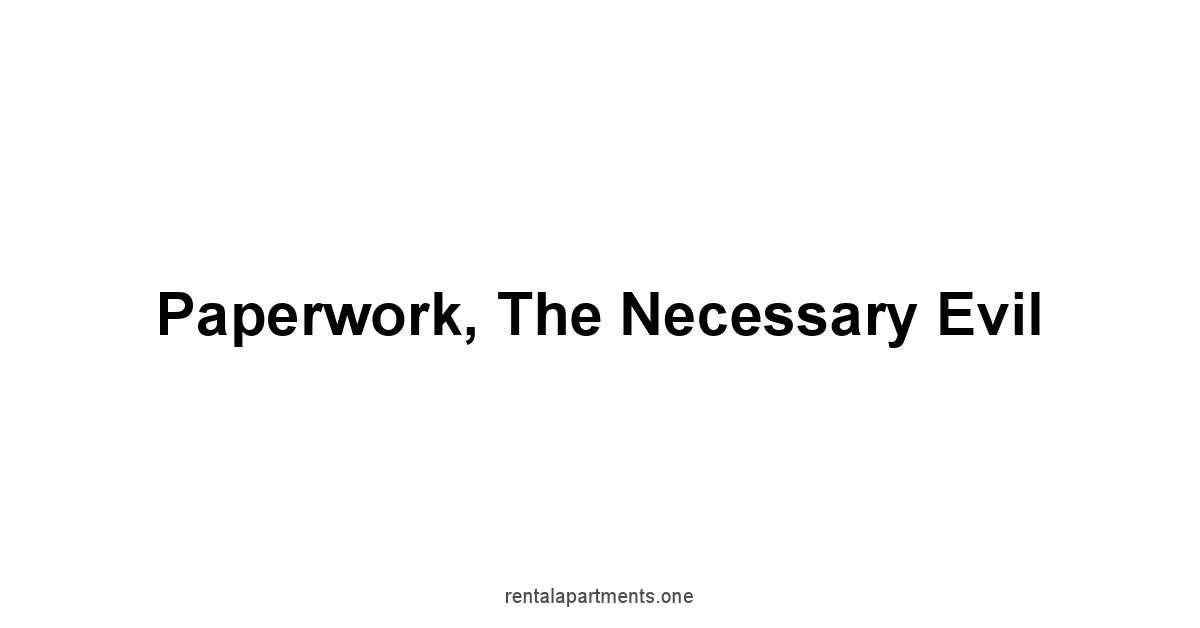
Paperwork is a necessary evil, but it’s a crucial step in securing an apartment.
This part of the process is often tedious and long but cannot be neglected.
Take the time to read every line, and make sure you are informed.
These documents are the legal foundations of your lease.
It’s important to understand what you are signing before you put your name down, so it’s important to have a good understanding of everything.
Lease Agreements: Read It Twice, Maybe Three Times
The lease agreement is the most important document you will sign.
Read it carefully, not just once, but twice, or even three times.
Every word matters, every clause has its consequences.
Don’t just sign on the dotted line, make sure you understand your rights, and responsibilities.
This isn’t just a formality, this is a binding legal contract.
- Lease Term: What is the length of the lease agreement? Is it month-to-month, a six-month lease, or a year?
- Rent Amount: What is the exact rent amount and how often do you have to pay it, and by what method?
- Late Fees: Are there late fees for missing a payment? If so, how much are they?
- Pet Policies: What are the specific rules regarding pets? Any extra fees?
- Maintenance Responsibilities: What is the landlord responsible for, and what are you?
- Early Termination: What are the penalties for breaking the lease early?
- Subletting Policy: Are you allowed to sublet the apartment, and what are the rules?
- Renewal Options: Is there an option to renew the lease, and what are the terms?
| Aspect | Questions to Ask |
|---|---|
| Lease Term | How long does the lease last? |
| Rent Amount | How much is the rent and when is it due? |
| Late Fees | What happens if you pay late? |
| Pet Policies | What rules apply to pets, if any? |
| Maintenance | Who is responsible for repairs and upkeep? |
| Early Termination | What penalties do you face if you leave early? |
| Subletting Policy | Can you rent out the property? |
| Renewal Options | Can you renew the lease, and what are the conditions? |
Don’t let the legal jargon scare you.
If there is something you don’t understand, seek clarification.
Application Forms: Full Disclosure, No Lies
Application forms are your chance to show that you are a responsible tenant. Full disclosure, and honesty are essential.
Don’t be tempted to hide anything, or give false information.
Be upfront, and transparent and provide accurate and truthful information.
- Personal Information: Be honest and accurate with your personal information.
- Rental History: Provide all relevant details about your rental history and previous landlords.
- Employment: Provide truthful information about your employment and income.
- References: Offer a good list of references that will speak positively about you.
- Credit Checks: Be prepared for a credit check, and understand that your score might be a factor.
| Category | Information to Include |
|---|---|
| Personal | Name, address, phone number, email |
| Rental History | Previous addresses, landlord contacts |
| Employment | Current employment status and income |
| References | Contacts for character and professional references |
| Credit Checks | Be prepared for a check, and understand that this will be important |
Full disclosure is key.
Any false information can disqualify you or cause issues down the line.
Security Deposits: Protect Your Cash
The security deposit is a payment made to protect the landlord from any damages to the property.
Understand the terms related to security deposits, how they are held, and what circumstances would cause you to not receive your money back.
You want to make sure that your security deposit is well protected.
- Amount: How much is the deposit? Make sure that the amount is legal, and not too high.
- Holding: How will the deposit be held? Some states have specific rules about how the deposit should be held and where.
- Return Conditions: What are the conditions for getting your full deposit back?
- Deductions: What types of damages can the landlord deduct from your deposit?
- Timeline: What is the timeline for the landlord to return your deposit?
| Aspect | What to Check |
|---|---|
| Amount | How much is the deposit |
| Holding | How and where will it be held? |
| Return | Under what conditions can you get the full amount? |
| Deductions | What can be deducted? |
| Timeline | When will it be returned to you? |
Know your rights.
This deposit is important, and you need to protect it.
Renters Insurance: Your Safety Net
Renters insurance is your safety net, it protects your possessions against theft, fire, water damage, and other unforeseen events.
Renters insurance is not optional, it is essential and should be mandatory for all tenants.
Make sure you are protected and have this security.
- Coverage: What does the policy cover? Make sure that the policy covers the events you want.
- Personal Property: How much coverage is there for your personal property?
- Liability Coverage: Does it cover you if someone gets injured in your apartment?
- Policy Cost: What is the cost of the policy?
- Deductible: What is the deductible you have to pay before the insurance covers the cost?
| Coverage Area | What to Check |
|---|---|
| Personal Property | How much is covered if your belongings are stolen or damaged |
| Liability | Are you covered if someone gets hurt? |
| Cost | The monthly fee for the insurance |
| Deductible | How much is the deductible before they cover costs? |
Renters insurance is a small price to pay for peace of mind. Make sure that you have adequate coverage.
Making the Move, The Final Push
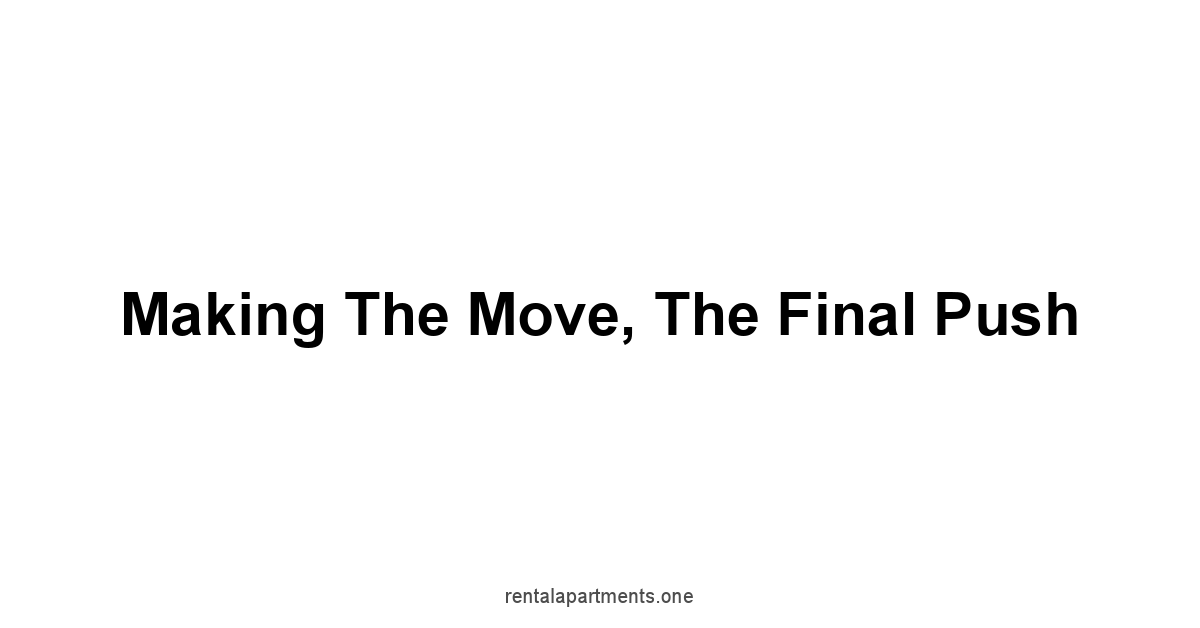
With the paperwork completed, it’s time for the final push: the move.
This is where all the planning, all the searches, all the preparations come together.
It can be a chaotic process, but with planning, it can be smooth.
It’s time to get organized, get things done, and transition to your new home.
The last step to completing this whole process, is to get your stuff packed, get your utilities ready, and move to your new place. You are almost there, so let’s get it done.
Packing, The Art of Efficient Chaos
Packing is not about throwing everything in boxes. It’s an art of efficient chaos.
You need a strategy, a system, a way to get all your belongings packed without losing your mind.
The more organized you are, the smoother the process will be.
This is a battle and you have to take it seriously.
- Start Early: Don’t wait until the last minute; start packing weeks in advance, if possible.
- Declutter: Get rid of anything you don’t need or use. The more you eliminate, the less you have to pack, which is crucial in any move.
- Label Boxes: Clearly label each box with its contents and the room it belongs to.
- Packing Supplies: Use sturdy boxes, packing tape, bubble wrap, and packing paper. Get quality supplies that won’t break.
- Essentials Box: Pack an essentials box with toiletries, medications, and a change of clothes.
- Heavy Items: Pack heavy items in smaller boxes to make them easier to carry.
- Fragile Items: Wrap fragile items carefully to prevent damage.
- Take Pictures: Take pictures of how your electronics are plugged in before disconnecting.
| Packing Step | Actions to Take |
|---|---|
| Start Early | Begin packing a few weeks before the move |
| Declutter | Reduce the amount of things you have to pack |
| Label Boxes | Clearly mark each box with contents and the room it is going to |
| Supplies | Get the best quality supplies, such as boxes, tape, and bubble wrap |
| Essentials Box | Pack a separate box with all the essential items |
| Heavy Items | Pack them in smaller boxes so they are easier to carry |
| Fragile Items | Be careful when wrapping, use bubble wrap and paper |
| Take Pictures | Take pictures of how your electronics are set up, to help you set them up again |
Packing can be a massive task, but with some planning and strategy, you can get through it.
Be organized, stay focused, and don’t take too many shortcuts.
Utilities, Lights, Water, The Basics
Before moving day, you must set up utilities at your new apartment.
This ensures that you have essential services like electricity, water, gas, and internet.
It’s a critical step that often goes unnoticed until it is too late.
Don’t be left in the dark, make sure that these are set up correctly.
- Electricity: Contact the electricity company to set up service at your new address. This is often essential to set up before you move in.
- Water: Contact the water company to establish service at your new address.
- Gas: If your apartment uses gas, contact the gas company to set up service.
- Internet: Choose an internet service provider and schedule installation before or soon after your move.
- Cable/Satellite: If you need cable or satellite service, schedule the setup in advance.
- Start Dates: Confirm the start dates of all services to make sure they are active on your move-in day.
| Utility | How to Set Up |
|---|---|
| Electricity | Contact the local company and set up service |
| Water | Contact the local provider to establish service |
| Gas | If applicable, contact gas provider to set up service |
| Internet | Set up service with the provider of your choice |
| Cable/Sat | Schedule the installation with the service provider |
It’s best to do this before you move in so you have the basic necessities set up when you arrive.
Moving Day, The Heavy Lifting
Moving day is the day you’ve been preparing for, a day of heavy lifting, strategic organization, and focused activity.
Make sure you are prepared and ready for the big move.
- Moving Company: If using a moving company, confirm the schedule, and have a contact person, and all the paperwork.
- Truck Rental: If you’re renting a truck, confirm the reservation and pick-up time. Be sure that you also have all the paperwork.
- Helpers: Enlist friends or family to help, and make sure you have a plan for who does what.
- Protect Belongings: Use blankets, and other protection methods to make sure nothing is broken during the move.
- Strategic Unloading: Unload the boxes in a way that they go to the right room. Make sure that your friends or helpers know where to place them.
- Take Breaks: Moving day is very tiring, so take breaks to avoid overexertion.
- Check Inventory: If you have hired a company, check your inventory list against what you move into the new place.
- Key Handover: If moving out, do a key handover procedure and do a final walkthrough.
| Moving Task | Action to Take |
|---|---|
| Moving Company | Confirm schedule and have a contact person |
| Truck Rental | Confirm reservation and pickup time |
| Helpers | Have help ready and a plan of what each should do |
| Protect Belongings | Use padding and protection to make sure nothing breaks |
| Strategic Unloading | Make sure that boxes go directly to the right room in the new place |
| Breaks | Take breaks to avoid overexertion |
| Check Inventory | If hiring movers, check your list against what you bring |
| Key Handover | If applicable, do a proper handover and final walkthrough |
Moving day is hectic, but with the right preparation, and a good approach, it doesn’t have to be a nightmare.

Change of Address: No Lost Mail
Don’t forget to change your address, otherwise, important mail might go to your old place. This is crucial and easily overlooked.
It’s a simple step, but important, so it is best not to neglect it.
It’s also important to notify all relevant people, institutions, and companies.
- Post Office: Update your address with the post office to forward your mail to your new address. You can do this online or in person.
- Banks/Credit Cards: Notify all banks and credit card companies of your new address. You can do this through their apps or online.
- Employers/School: Let your employer and school know your new address.
- Subscriptions: Update all subscriptions, be they magazines, online platforms, or other services.
- Family/Friends: Inform your friends and family of your new address, so they can keep in touch.
- Online Accounts: Update your address on all online accounts that might use your mailing address.
| Notification Target | How to Update Address |
|---|---|
| Post Office | Update online or in person |
| Banks/Credit Cards | Update through their websites or apps |
| Employers/School | Notify HR or school administration |
| Subscriptions | Update via their websites or customer service |
| Family/Friends | Inform them via message, call or in person |
| Online Accounts | Update on each individual website/app |
A change of address is essential to ensure that you don’t lose any important communications.
Settling In, Make it Home
Finally, you are in your new home. Now it’s time to settle in.
Unpack, organize, and start making the place your own.
Don’t rush it, take your time, and enjoy the process.
This is now your place, so it’s time to put your personal touch into it.
- Unpack: Unpack your boxes room by room. Do not try to unpack everything at once, that will cause you to lose focus.
- Set up Essentials: Focus on setting up your bed, bathroom, and kitchen. These are the most important areas.
- Organize: Find a place for everything, and start organizing to ensure you have a good system in your place.
- Personal Touch: Add personal items to make it feel like home.
- Explore: Take time to explore your new neighborhood.
- Relax: Don’t feel pressured to have everything done right away. Take your time to enjoy your new home and relax.
| Settling-In Step | Action to Take
Conclusion
The hunt for the perfect apartment is a complex mission, not unlike a long campaign. It demands strategy, patience, and a sharp eye.
You’ve started with a clear list of needs, differentiating must-haves from the nice-to-haves, and have established your budget as an uncrossable boundary.
You’ve then scouted out the best locations, considering commute times, neighborhood feel, and the essential amenities.
You’ve navigated the vast online marketplaces and local agents and even pounded the pavement to find the best places. Now, what was once an ambition is now a reality.
The meticulous inspections you conducted, checking each unit for structure, water, safety, and the parking situation, are proof that you are not cutting corners. You did not take the easy road but put in the work.
You’ve also navigated the necessary, if tedious, paperwork of leases, applications, deposits, and renter’s insurance.
These steps, while often overwhelming, are the foundations of the roof over your head.
You understood that every step is crucial, not an option.
Moving is rarely easy.
But you planned and packed with organization in mind.
You had the utilities set up and organized the moving company or rental truck, all in preparation for the heavy lifting.
You made sure your mail wouldn’t get lost, and changed your address, so all correspondence reaches you in your new place.
This comprehensive effort, that is the result of your strategy.
Now, all that’s left is the final act: settling in, making your new place your new home.
You are now ready.
The apartment is now your space, and its time to live in it and make it yours.
The search has ended, and you now can relax and unpack and put your own touch into it.
It’s the place you chose, a place you made yours, and now is the place to create good memories.
Now its your turn to enjoy the space, and live your life, in this new chapter of your life.
Frequently Asked Questions
What’s the first thing I should do before looking for an apartment?
You need to know what you need, what you absolutely must have, and what would be nice but not essential.
It’s like going into a fight, you need a plan, not just blind swings.
A clear list of must-haves and nice-to-haves will keep you on track.
How do I figure out what location is best for me?
Think about your daily routes, where you go often, like work or school.
What is the vibe of the neighborhood? Is it lively or quiet? Check out the local shops, parks, and public transportation options. Walk around and see if the place feels right.
How much should I spend on rent?
Your budget is the hard line you don’t cross. Know your finances, and stick to it.
As a rule, don’t go above 30% of your gross monthly income.
Don’t just think of the rent, factor in all monthly costs, utilities, internet, and insurance, and other associated costs.
Where should I look for apartment listings?
Online marketplaces like Apartments.com, Zillow, and Craigslist are the first line of attack.
Local real estate agents are your foot soldiers, they can find you places you won’t find online. Word of mouth is powerful, so ask your friends.
And don’t forget to get out and drive around, you never know what you will find.
What should I check when I inspect an apartment?
Check the basics: lights, water, and structure.
See if the lights work, check the water pressure, and look for cracks in the walls. Test all appliances.
Don’t forget the common areas, are they well maintained? And check for safety measures: smoke detectors, locks, and escape routes.
What is the most important thing to look for in a lease agreement?
Read it carefully, twice, maybe three times.
Understand the lease term, rent amount, late fees, pet policies, and who is responsible for maintenance.
Check the penalties for breaking the lease early, and if you can sublet the place.
What should I do about my security deposit?
Know how much it is, how it’s held, and what conditions will allow you to get it back.
See what kind of deductions the landlord can make, and when you can expect it back. Protect your cash, know your rights.
Why do I need renters insurance?
Renters insurance is your safety net.
It covers your belongings from theft, fire, and other disasters.
It also protects you if someone gets injured in your apartment. It’s not optional, it’s essential.
How should I approach packing?
Start early, declutter, label boxes clearly, use good supplies, pack an essentials box, and be careful with heavy and fragile items.
Take pictures of your electronics before unplugging. Packing is chaos but it can be organized.
What about setting up utilities?
Do this before you move in. Contact the electricity, water, and gas companies. Set up your internet and cable. Confirm the start dates, so everything is ready.
How should I approach moving day?
Confirm your moving company or truck rental.
Enlist help, protect your belongings and unload in a strategic way so boxes go to the right room. Take breaks, it’s a long day.
What is the most important step after moving?
Don’t forget to change your address with the post office, banks, employers, and all your subscriptions. And start settling in and making the place yours.

